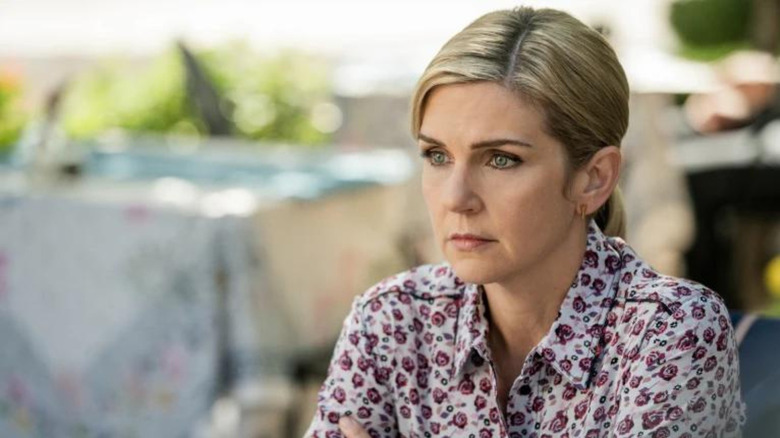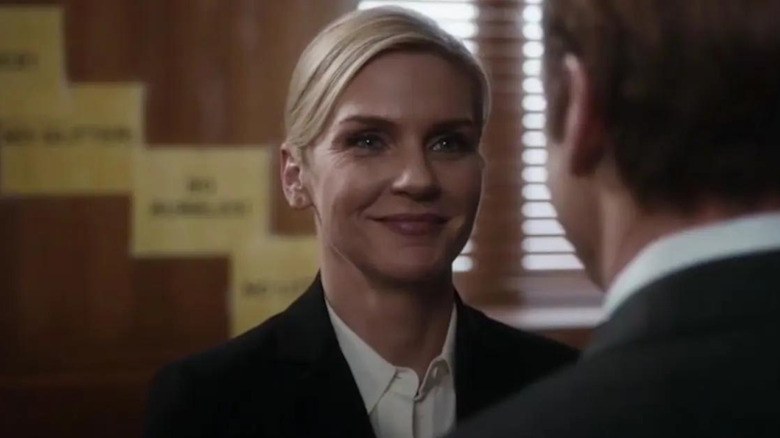Rhea Seehorn Didn't Get To Choose The Better Call Saul Season 6 Episode She Directed
It's hard to imagine how successful "Better Call Saul," the little "Breaking Bad" spin-off that could, would have been without Rhea Seehorn. Sure, star Bob Odenkirk consistently gave some of the best performances on television during the show's run, but Seehorn was arguably the soul of the series. Her character of Kim Wexler was its fluctuating moral compass, not purely defined by her relationship with Odenkirk's Jimmy/Saul. We have written a lot about how wonderful Seehorn and her portrayal of Kim were over the show's six seasons, so this should not be a surprise to anyone.
What was a surprise, however, was when it was announced ahead of the show's final season that the actress would direct one of its episodes. While she has directorial credits on other projects, it would be her first and only time directing her "Better Call Saul" castmates. The episode in question was the fourth episode, "Hit and Run," which featured some of the actress's most memorable scenes of the whole show. However, according to Seehorn, she was simply given that episode to direct.
"Some people asked me after the episode came out, 'Wow, you really wanted to direct yourself in some heavy scenes?' But I didn't choose the episode," she told The AV Club in an interview. "What directors are available when is a huge jigsaw puzzle for any episodic series, so I got the episode I got and thought the same thing about Kim's major scenes."
Set up for success
Even if she didn't specifically choose that episode to direct, her familiarity with the material and her connection to Kim helped elevate it. However, since it was her first time directing an episode of television (Seehorn co-created and directed short episodes of a webseries called "Cooper's Bar" in 2022), she had some assistance by her side to ensure the process went as smoothly as possible.
"Peter Gould and everyone else on the show set up an infrastructure to make it possible for me to do this and to set me up for success," she explained. "We also had some locations thing to solve. We would also shoot out of sequence, which meant I would direct for two days and then have two days off. They really set up a system where I could take care of technical things."
This sounds like a system we can absolutely get behind, especially if it means we get to see more exciting directorial voices. The scheduling approach AMC set up for Seehorn arguably resulted in one of the best episodes of its final season, and that's saying a lot. If this can be expanded so that fresh yet underutilized directors can make their big break, we can only imagine how the wider television landscape will improve.

